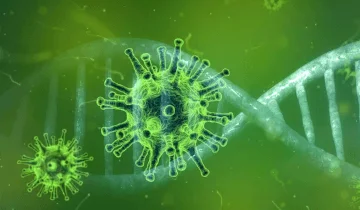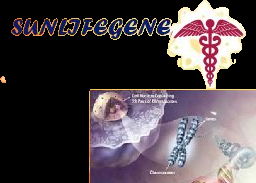COVID 19 and SARS CoV2: Origin, Symptoms, and ECMO Edward Dong Grade 7 student Toronto, On Canada Feb 28,2020

COVID 19 and SARS CoV2: Origin, Symptoms, and ECMO
Edward Dong Grade 7 student Toronto On Canada Feb 23,2020
The coronavirse disease 2019 (COVID-19) is a new type of disease caused by severe acute respiratory syndrome coronavirus 2 (SARS-COV2) that has been discovered in Wuhan, China in mid-December 2019.
What is a coronavirus?
Coronaviruses are a group of RNA+ viruses the common cold to more severe effects such as pneumonia. There are 7 types of coronaviruses that can infect humans, and they are single stranded RNA viruses. These include HCoV-229E, HCoV-OC43, HCoV-NL63, HKU1, SARS, and MERS. COVID-19 can cause pneumonia, cough, fever, and having difficulty breathing. It is very similar to Severe Acute Respiratory Syndrome (SARS) and Middle East Respiratory Syndrome (MERS). This new virus measures from 60-220 nanometres. This new signal +RNA virus has 27000-32000 base pairs.
This new coronavirus was thought to be originated in bats, and transmitted to humans. Human-to-human transmission is possible. 70548 cases have been reported in China, and nearly 2000 cases of death have been reported.
How did scientists discover this virus?
On December 2019, patients with pneumonia started appearing at a hospital. Scientists used virus isolation to detect the new virus. Scientists use special-pathogen-free human airway epithelial (HAE) cells. They use sample swabs from the patients that are put into the HAE cells. The cells are kept at 37 degrees celcius in an air-liquid interface. Then, the scientists monitored the cells daily for cytopathic effects by light microscopy and cell supernatants
How can I protect myself?
The World Health Organization (WHO) recommends basic hygiene such as washing your hands, covering your mouth when coughing and sneezing, avoiding contact with farms and animals, and cooking meat thoroughly.
How worried should I be?
The coronavirus is not nearly as deadly as SARS, at a death rate of 2.1% worldwide, while SARS had a death rate of 15%. Although the coronavirus is not as deadly, you should always be aware of the people around you. It is spreading quickly, but most people can recover on their own if they catch the disease.
How do coronaviruses make people sick?
The coronavirus is spread by respiratory droplets that people cough, and delivering through holes of the human body, like the eyes, nose, and mouth. In order for the virus to survive, it must duplicate and take over living cells. COVID-19 uses Angiotensin Converting Enzyme 2 (ACE2) to gain access into cells. ACE2 is found on the surface of some cell types, such as hearts, kidneys, blood vessels, and lung cells. The SARS virus also used the same method to enter the cells. ACE2 is a protease that gets rid of amino acids from a protein known as angiotensin. Angiotensin helps regulate blood pressure and heart function.
ECMO; Extracorporeal Membrane Oxygenation
Extracorporeal Membrane Oxygenation, also known as extracorporeal life support (ECLS) is an extracorporeal technique of providing prolonged cardiac and respiratory support to persons whose to provide an adequate amount of gas exchange of perfusion to sustain life. The technology for ECMO is largely derived from cardiopulmonary bypass, which provides shorter-term support with arrested native circulation. This intervention has mostly been used on children, but it is seeing more use in adults with cardiac and respiratory problems.
How does it save lives?
An ECMO machine pumps blood into an oxygenator that adds oxygen and removes carbon dioxide, then sends the blood back to the person with the same force of a heart.
Reference:
1. https://www.thelancet.com/journals/lancet/article/PIIS0140-6736(20)30185-9/fulltext
2.https://www.who.int/emergencies/diseases/novel-coronavirus-2019
3.https://www.nature.com/articles/ncomms15092
4.https://www.ontario.ca/page/2019-novel-coronavirus
5.https://www.nejm.org/doi/full/10.1056/NEJMoa2001017
6.https://www.nejm.org/doi/full/10.1056/NEJMoa2001316
7.https://www.sciencemag.org/news/2020/02/paper-non-symptomatic-patient-transmitting-coronavirus-wrong
8.https://www.nature.com/articles/s41586-020-2012-7
